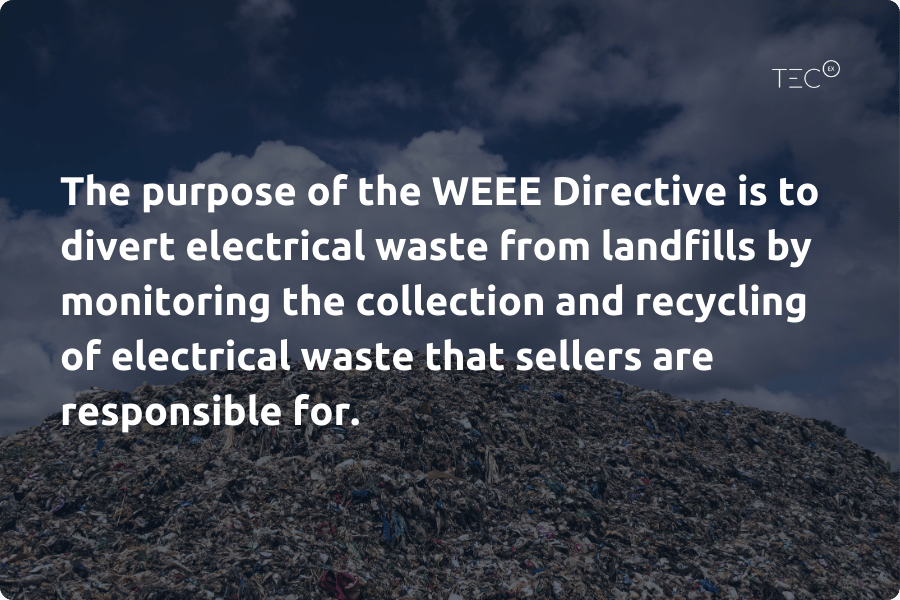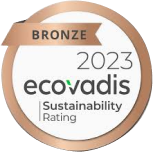The waste electrical and electronic equipment (WEEE) Directive is a collection of regulations that are set out to reduce the amount of WEEE improperly disposed of and sent to landfill sites.
The new set of regulations in the WEEE Directive affects many businesses. As an ecommerce seller dealing with electronic waste, you must ensure you know the WEEE Directive and how these obligations impact you.
Not being compliant with the WEEE Directive can result in a hefty fine. So, we’re giving you a helping hand by summarizing the WEEE Directive, who it impacts, and how it affects ecommerce sellers.
What is WEEE Directive?
The Directive’s purpose is to divert electrical waste from landfills by monitoring the collection and recycling of electrical waste that sellers are responsible for.
Electric waste only accounts for around 2% of overall trash in landfill sites. Two percent doesn’t seem like much, but this electric waste makes up around 70% of the toxic heavy metals in landfills.
Not disposing of electrical waste properly is a serious problem and can have negative long-term consequences, creating public health problems and polluting ecosystems. Air can be harmfully contaminated by e-waste, even more so in countries where recycling processes are poorly regulated. Air pollution has a detrimental impact on the environment and the ecosystems of animals and humans.
WEEE Directive works to combat this by setting out regulations to ensure the correct disposal of e-waste by manufacturers and sellers.
Who Is Affected by WEEE Directive?
WEEE regulations affect any company or person that does any of the following:
- Distribute or sell electrical or electronic equipment (EEE)
- Manufacture, import, or rebrand EEE
- Refurbish or repair WEEE
- Treat, recycle or recover WEEE
- Generate any WEEE
These regulations affect a huge range of ecommerce sellers. It’s important if your business falls into any of the above categories to read up on WEEE Directive to keep it compliant regarding disposing of electrical waste.
How WEEE is Categorized
WEEE is categorized as anything that requires an electric current, a battery, or solar energy to operate. There are ten different categories that WEEE will typically fall into:
- Large household appliances (refrigerators and freezers, air conditioning equipment, dishwashers, laundry, cookers, etc.)
- Small household appliances (vacuum cleaners, cooking equipment, microwaves, cleaning equipment, etc.)
- IT and telecommunications equipment (desktops, PCs, tablets, phones, printers, monitors, etc.)
- Consumer equipment (TVs, HIFI, video, etc.)
- Lighting equipment (fluorescent lamps, sodium lamps, other lighting equipment, etc.)
- Electrical and electronic tools (drills, saws, mowing, gardening equipment, etc.
- Toys, leisure, and sports equipment (video game consoles, casino machines, toys, etc.)
- Medical devices (radiotherapy, cardiology, dialysis equipment, other medical equipment)
- Monitoring and control equipment (smoke detector, thermostat, measuring equipment, and other control instruments)
- Automatic dispensers (food, beverage, and solid product distributor)
How Does WEEE Directive Affect eCommerce Sellers?
WEEE Directive will most likely pose challenges to ecommerce sellers as there are new obligations sellers must abide by. As an ecommerce seller, you will probably need to adapt your processes to accommodate these obligations.

Registering with WEEE Authorities
As an e-commerce seller, you must be registered with the authorities in charge of WEEE management in every EU country where your products are sold. All the contact details of each EU country’s national register can be found on the European WEEE Registers Network.
Accommodating Recycling Costs
If you’re a seller dealing with electrical waste, you’ll likely find that you’ll have to accommodate increased recycling costs in your budgeting due to WEEE regulations. This ensures that your e-waste is disposed of properly.
Keeping Record of your WEEE
With the introduction of the WEEE Directive will come an increased amount of records that will need to be kept relating to electrical waste. Due to the new regulations, there will need to be records of electric goods manufactured and sold, what category each product falls into, and records/proof of appropriate disposal being arranged.
A Helping Hand for eCommerce Sellers
With the introduction of the WEEE Directive, selling electronic products and disposing of them appropriately is now something that needs to be monitored closely to keep you compliant as an ecommerce seller. If you’re also an international seller, you’ll have to juggle this on top of dealing with importing, customs and VAT.
TecEx is a complete IOR, import, and logistics solution for ecommerce sellers expanding into international markets, taking away the stress of importing internationally by dealing with customs, VAT, and any compliance complications that could arise from importing goods internationally.
Our IOR service allows us to take responsibility for your shipments and pay for the relevant fees, import duties, and taxes, ensuring that each import complies with local laws and regulations. This will save you a great deal of time and hassle trying to understand each country’s regulations.
Need to know more? TecEx, have you covered all our FAQs around customs compliance, international freight, Exporter of Record (EOR), and Importer of Record (IOR).



